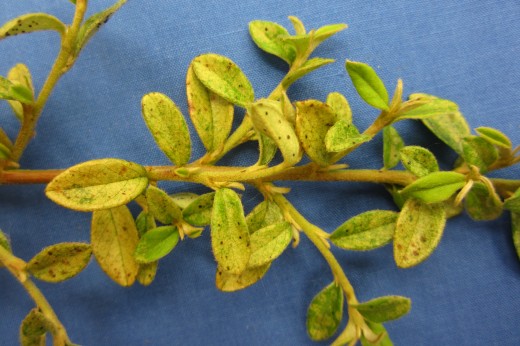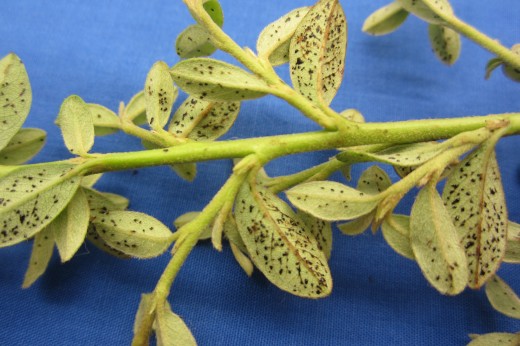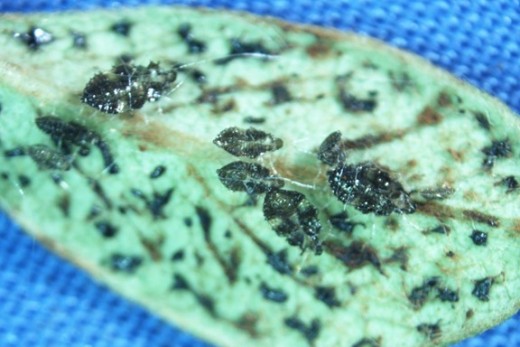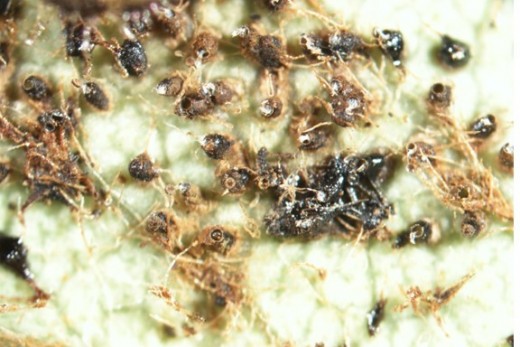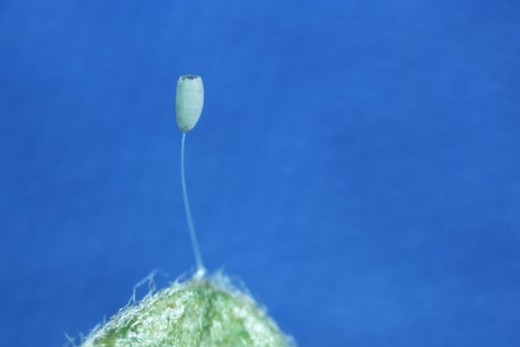(Megan Kennelly, KSU Plant Pathology)
Brown spots are not always a disease.
We had a cotoneaster sample last week that looked like this:
The undersides of the leaves looked like this:
The submitter thought this might be a disease, but upon closer inspection we found these guys, lacebug nymphs. The shiny black stuff near them is frass (insect poop).
Lacebug eggs:
But, what else did we find?
This is a laceWING egg. Lacewings are predators (good guys!), and they love to eat lacebugs!
I called my awesome colleague Dr. Raymond Cloyd to discuss this, and he confirmed that in general, lacebugs will not severely damage the plants. The damage is primarily aesthetic. And, the good guys (lacewings) were clearly in the area, doing their job. Dr. Cloyd’s advice was to let nature take its course. One “soft” option might be a hard spray of water to remove/reduce the lacebugs. That would also remove the lacewings, but the lacewings would come back.
Lacebugs (and many other insects!) are described in our publication: Tree and Shrub Problems in Kansas: Diseases, Insects, and Environmental Stresses. To get a copy of that publication, you can find the pdf HERE or you can order it by calling the K-State Research and Extension bookstore at 785-532-5830 where you can order a print copy for $9.70 + shipping.
